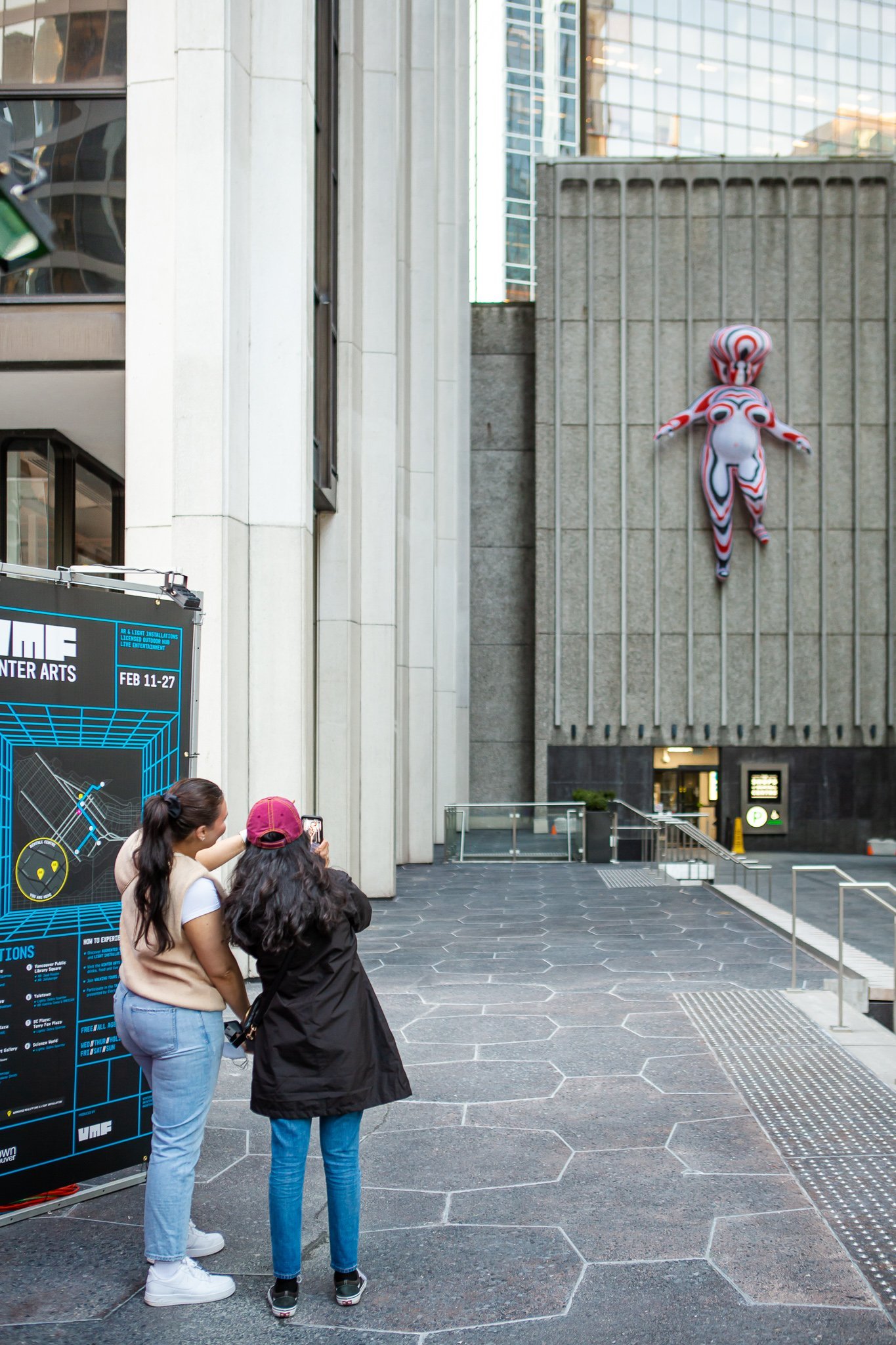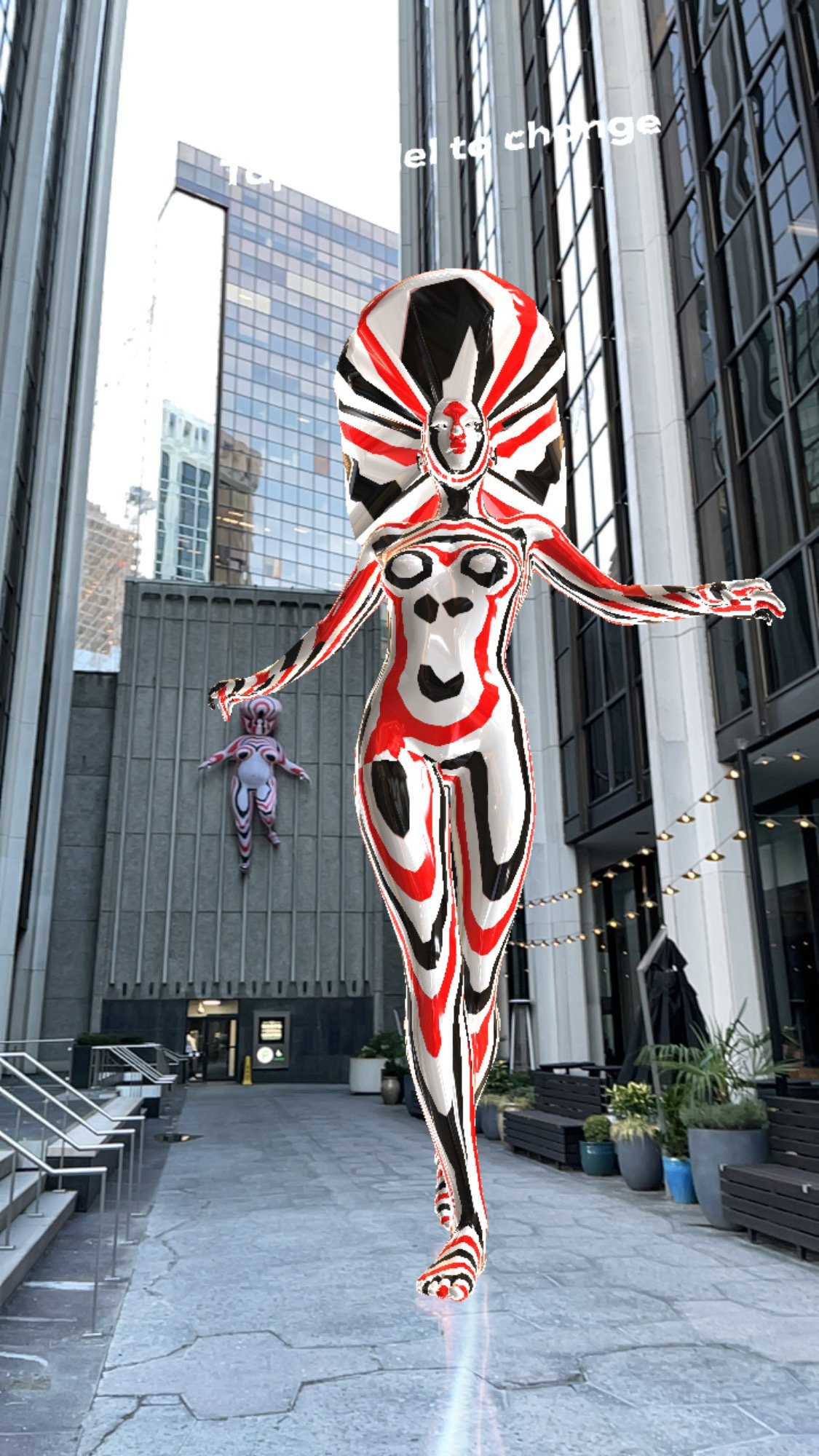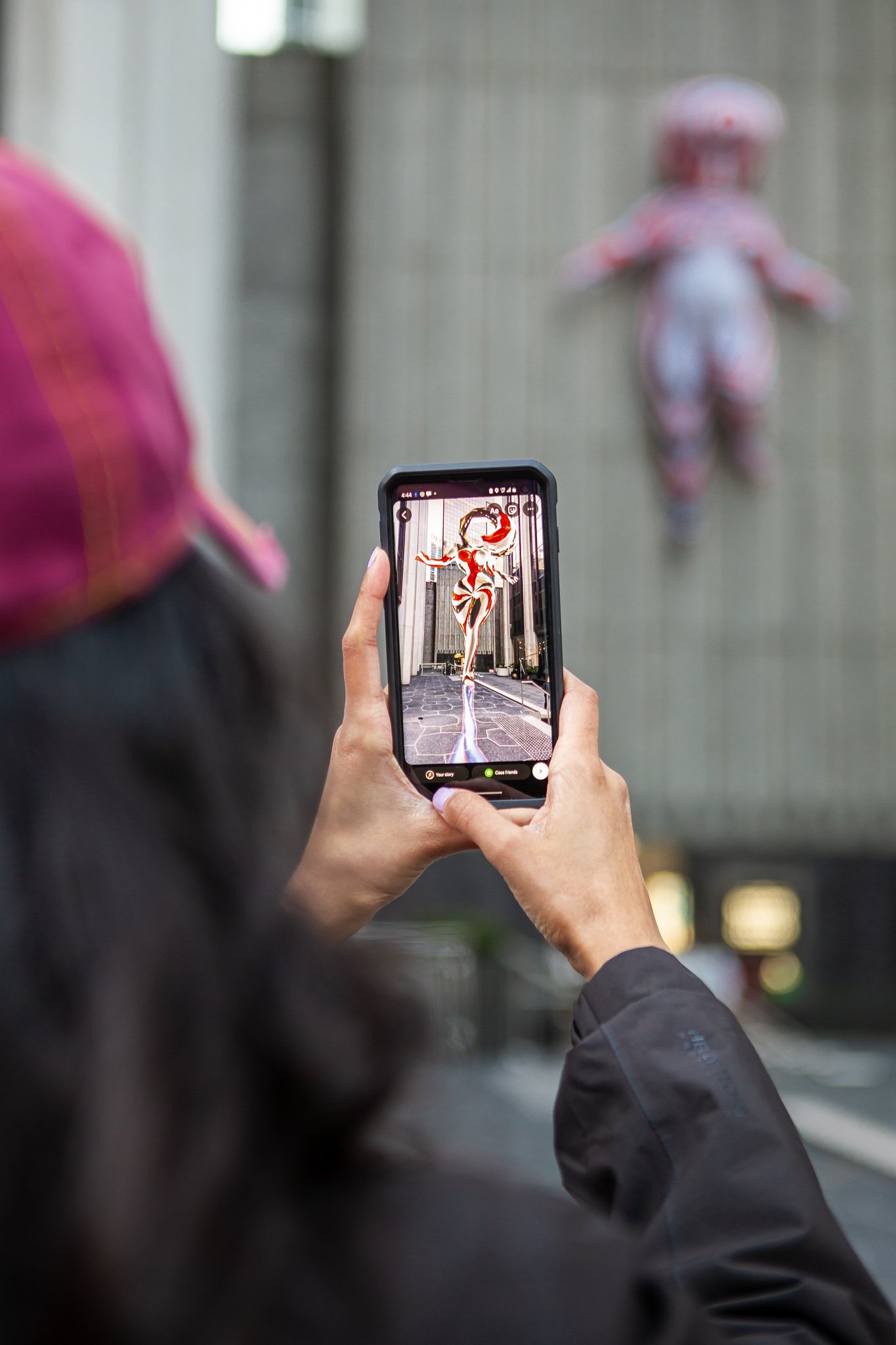MARJAN MOGHADDAM
Marjan Moghaddam is an award-winning and pioneering Digital Artist/Animator, known for her unique style of 3dCG figuration/animation and critical discourse.
She is the recipient of top awards/grants, exhibited at the Smithsonian and other museums.
She was the Adobe artist-in-residence in 2019 and was featured in Forbes' Best of AR Art. Her works are held in private, institutional and NFT art collections.
A political refugee and immigrant from Iran, Marjan lives and works in Brooklyn, where she is a Tenured, Full Professor of CG, Animation, and XR at LIU Brooklyn.
For VMF Winter Arts 2022, Marjan created a #GlitchGoddess that switches states based on user input, allowing for an interactive and individualized experience of the piece. Additional physical iterations brought the #GlitchGoddess into the streets of Vancouver.
#GlitchGoddess was born in 2017 as an intervention, by glitching the art historical convention of depicting female bodies in a singular form, as she switches from young, to old, slender, heavy, pregnant, glitched, stylized and abstract. Redefining digital bodies for the Post Digital and the metaverse through digital plasticity and special effects, #GlitchGoddess has also sold into top NFT art collections, as important and critically acclaimed contemporary art. #GlitchGoddess went viral in 2018.
During VMF Winter Arts (Feb11-27), Marjan’s AR installation was located at the Bentall Centre.
Until end of April 2022, you can still experience her #GlitchGoddess on the VMF Winter Arts Instagram’s profile by clicking on the effects tab (the 3 stars).
Read our interview with Marjan to learn more about her and her work.
You create digital art, but what other fields inspire you?
Art history and philosophy. I’ve always been compelled by ideas and visuals at the same time. I’m drawn to the profound, I find that it defines my experiences in a way that nothing else does.
How did you get into digital art?
As an exhibited artist, I’ve always done digital art.
I got into it when I was a student at the New York Institute of Technology (NYIT) in 1979 and one of the faculties created the first computer graphic paint program. At that time, I was a political refugee from Iran and I had lived through the 1978-79 Revolution, which devastated my family and my country. I was very attracted to the idea and promise of technology as a progressive force that was in direct contrast with the repressive forces that had taken over my country and were oppressing women and minorities. I think that trauma and technology clicked, and it’s been my life ever since.
In the 1980s I started working as a professional artist. For many years, I worked as a production artist, doing commercial graphics and animation work, while also creating art for exhibitions. My approach was to do commercial jobs to pay for my art. I did that for many years and it was really tough because it was like having two jobs. After being a production artist for all those years, I went into academia and became a college professor. At this point I was able to really develop my art practice and career in a way that supported my goals and ambitions.
The most important part of becoming a tenured college professor for me is that it allows me to spend a good amount of time making art and have an art practice that is not necessarily sales-based.
I want an art practice that has critical discourse, dialogue, and experimentation at its heart. When you have that kind of practice, you can’t focus on sales all the time.
With that said, I still continue to do some projects and commissions, in addition to art sales and NFT, annually to pay for my studio costs and software licenses. Digital art costs are much higher than traditional art.
Tell us more about your AR piece. What inspired you when creating an experience like this?
In 2016 I started a conceptual meta-art project called #arthacks on Instagram. I was basically hacking my digital bodies and signature artworks as a digital artist, I was using mixed reality and not AR.
My intention was to redefine form for digital art, but also to radicalize curation and democratize the exhibition space, while engaging in a critical discourse that was missing from the legacy art world.
In the 2017 Armory Show #Arhack in NYC, I had one of my female figures doing a runway walk and going from a very heavy body - at that time underrepresented in fashion - to a very slender model body and back. And I noticed how so many women responded to this.
In 2018 I did the first #GlitchGoddess. Later the same year I brought the piece to Art Basel Miami and it went viral on the internet with millions of views while set to a dialog of women discussing inequality in the art world.
I called her the #GlitchGoddess because she glitches the idea that female is a singular form based on traditional art historic conventions. Her body is constantly changing, from slender, heavy, pregnant, glitched, fashion-informed, and stylized, to abstract. #GlitchGoddess has been profiled in lots of international art publications as the first feminist art piece with major viral metrics.
In 2019 I exhibited her as Augmented Reality (AR). For VMF Winter Arts, I decided to make her interactive. Instead of me changing her body, I wanted people to develop their own iterations of what the #GlitchGoddess is.
Any recent projects you’re excited about?
At the moment I’m working on a commission of a physical sculpture from one of my figures, and that’s quite exciting. I’m also doing another AR figure for a public art project in Orlando.
I’m working mostly on NFTs right now.






